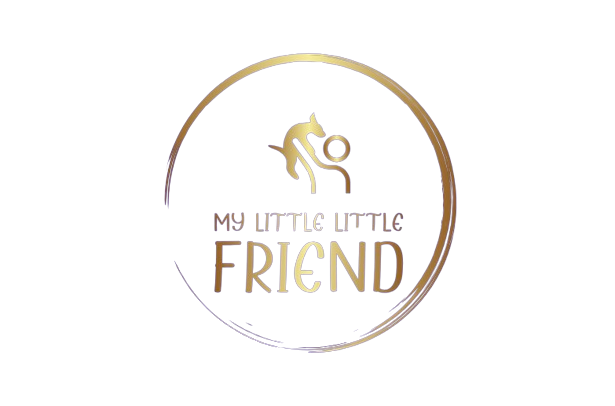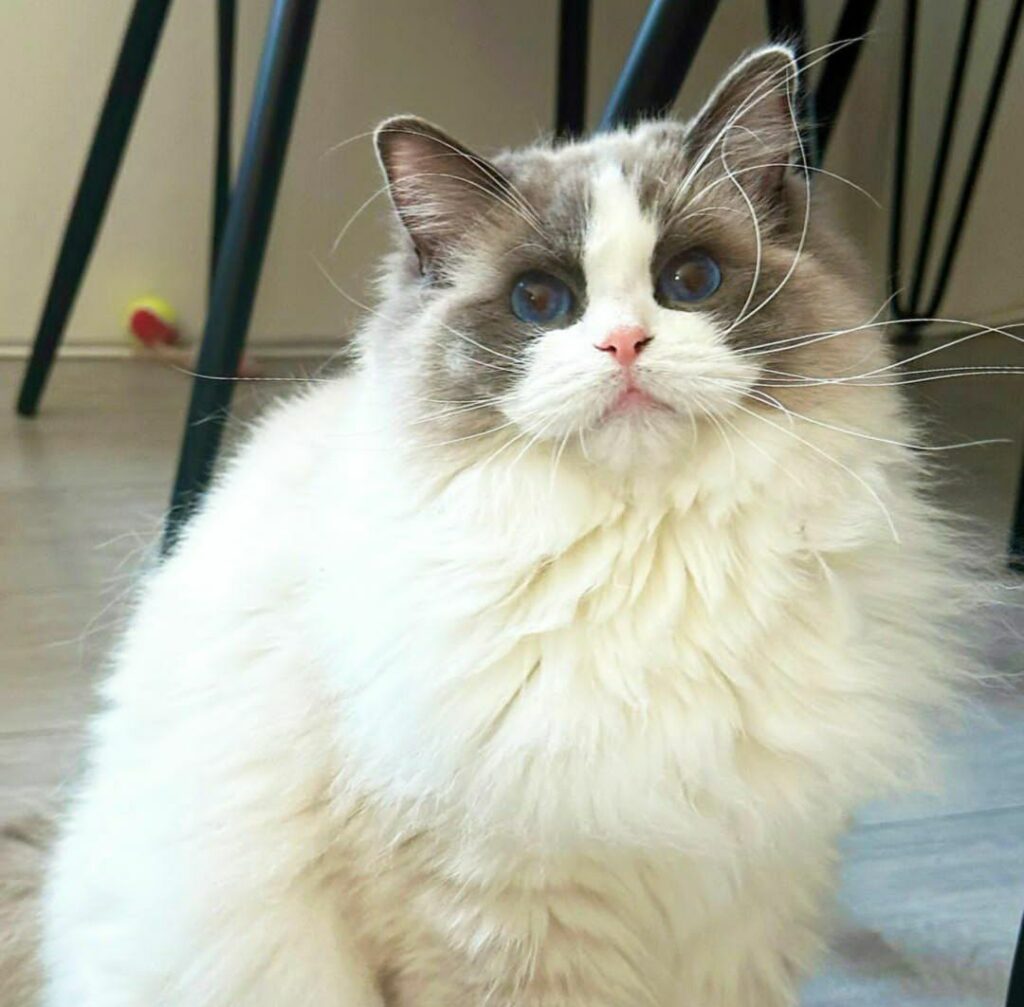The Ragdoll: A Lap Cat Disguised in a Luxurious Coat
The Ragdoll, with its mesmerizing blue eyes, silky fur, and famously relaxed temperament, embodies the quintessential lap cat. Often described as “floppy” or “doll-like” due to their tendency to go limp when picked up, these captivating felines have stolen hearts worldwide. Delving into the history, characteristics, care requirements, and fascinating facts surrounding the Ragdolls reveals a breed steeped in legend and brimming with charm.
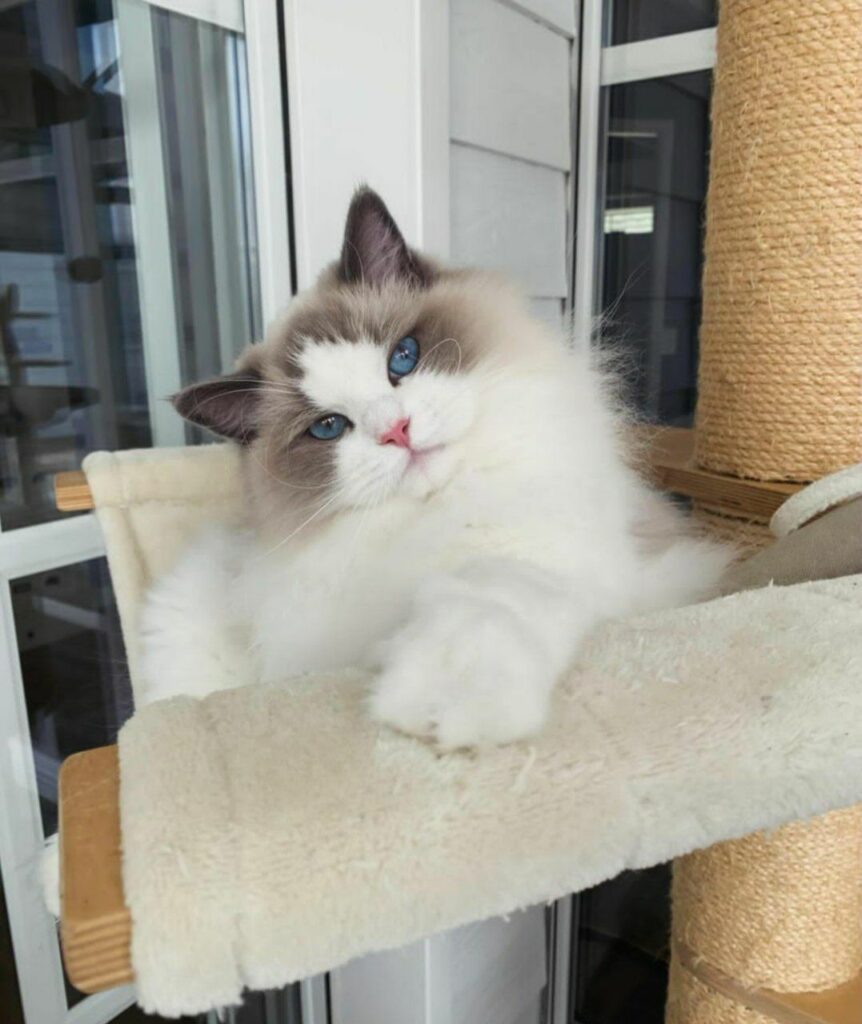
A Controversial Beginning: The Ragdoll’s Origin Story
Unlike many pedigreed cat breeds with meticulously documented histories, the Ragdoll’s origins are shrouded in some controversy. The breed’s creator, Ann Baker of Riverside, California, in the 1960s, offered a unique story about the development of the Ragdoll. According to Baker, her foundation female, a white Angora cat named Josephine, was involved in a car accident that supposedly altered her temperament, making her docile and limp. Baker then bred Josephine with other cats, including Burmese and Persians, to create the Ragdoll breed known today.
However, some cat fanciers have questioned the validity of Baker’s story. Genetic studies suggest that the Ragdoll’s origins likely lie in a natural mutation affecting temperament rather than a specific accident. Regardless of the exact origin story, selective breeding by Baker and other enthusiasts in the 1960s and 1970s solidified the Ragdoll’s unique characteristics, particularly their docile nature and stunning appearance.
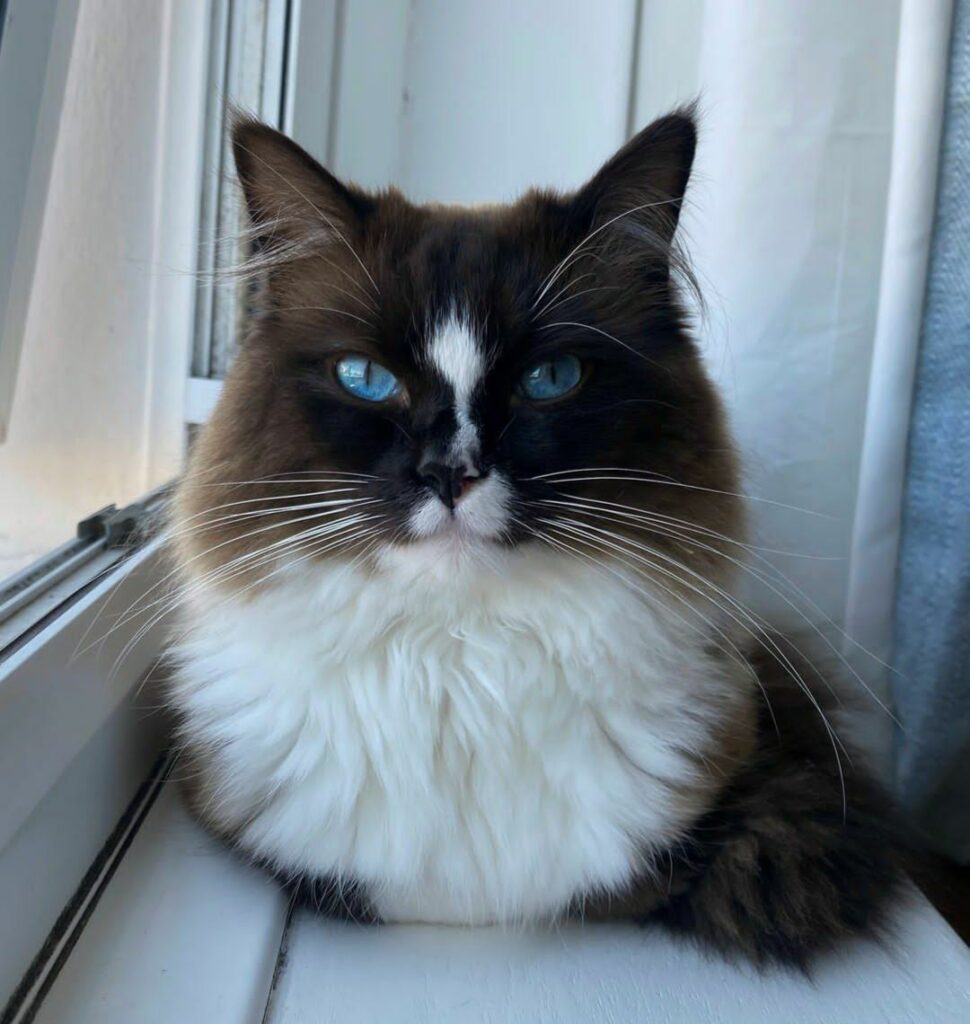
A Vision in Softness: The Ragdoll’s Appearance
The defining characteristic of the Ragdoll is undoubtedly their luxurious, silky fur. This medium-length, double coat comes in a variety of colors and patterns recognized by cat associations. The most common coat pattern is the “mitted” pattern, featuring darker points on the face, ears, legs, and tail, with a lighter colored body. Other recognized patterns include bi-color and pointed variations, offering a diverse range of options for potential Ragdoll owners.
Beyond their fur, Ragdolls are known for their impressive size and striking features. They are one of the largest domestic cat breeds, with males reaching weights of 6.5-10 kg (14-22 lbs) and females reaching 4.5-6.5 kg (10-14 lbs). Their bodies are long and muscular, with a broad chest and a rounded belly. Their heads are broad and wedge-shaped, with large, captivating blue eyes that seem to gaze into your soul.
The most distinctive feature of the Ragdoll, however, is their temperament. They are renowned for their docile and affectionate nature, earning them nicknames like “floppy cats” and “lap dolls.” This relaxed demeanor is attributed to a genetic mutation that reduces muscle tone when held. While not completely limp, Ragdolls tend to go limp with contentment when picked up, making them ideal companions for those seeking a cuddly and affectionate feline friend.
Gentle Giants with Playful Spirits: The Ragdoll’s Personality
The Ragdoll’s temperament is perhaps their most defining characteristic. They are known for their gentle, docile nature and their fondness for human companionship. Unlike some highly active breeds, Ragdolls are not known for being particularly energetic. However, they do possess a playful streak and enjoy gentle interactive games, such as chasing feather toys or swatting at dangling objects.
Their intelligence allows them to be trained with positive reinforcement, and they can even learn tricks like fetching or walking on a leash (with proper harness training). Ragdolls are also known for their vocal nature, using soft meows and chirps to communicate their needs and desires. These vocalizations, coupled with their gentle demeanor, contribute to their overall charm and appeal as companion animals.
Ragdolls are well-suited for families with children who are respectful of their boundaries. Their gentle nature and love of cuddles make them excellent companions for those seeking a calm and affectionate feline friend. However, due to their size and potential for being startled by rough play, they might not be ideal for households with very young children or those seeking a highly active feline companion.
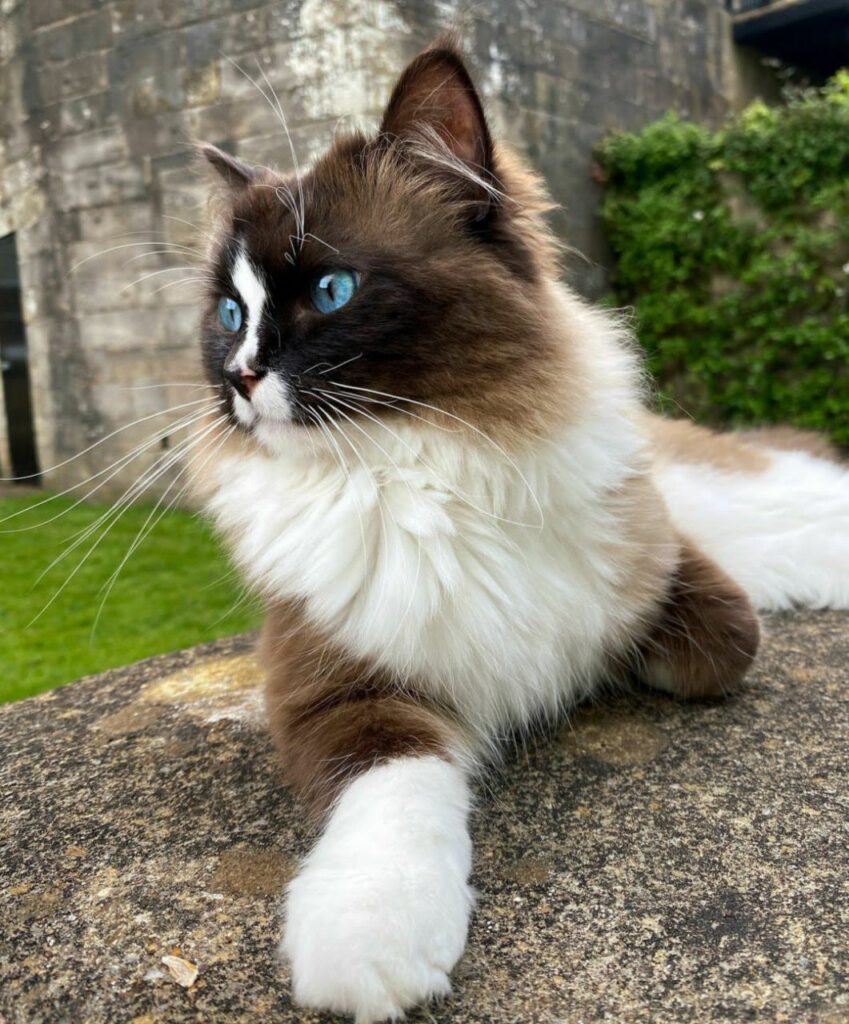
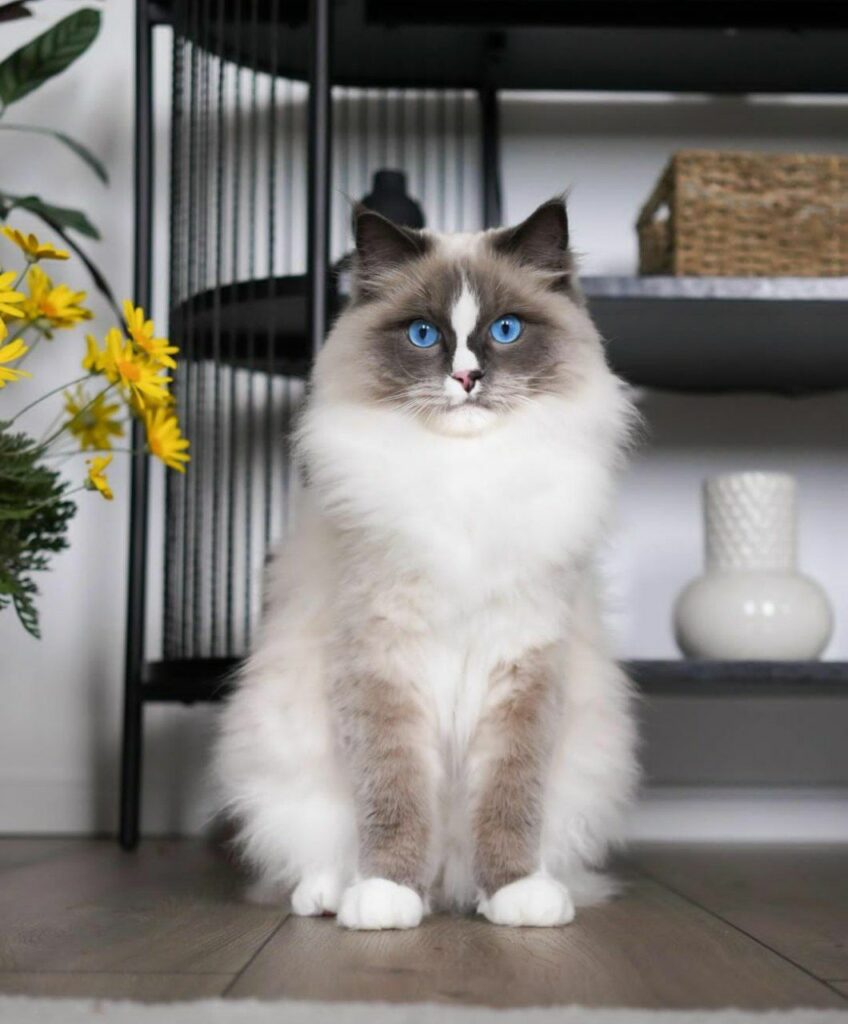
Living with a Lap Doll:
Here are some additional things to consider when living with a Ragdoll:
- Providing Enrichment: While Ragdolls are not known for being overly active, they still benefit from mental stimulation. Interactive toys, puzzle feeders, and climbing structures can help keep them engaged and prevent boredom. Providing them with a perch near a window allows them to indulge in their natural instinct for people-watching and birdwatching
- Grooming Essentials : Brushing 2-3 times a week with a slicker brush and a comb is recommended, particularly during shedding seasons. Regular nail trims and ear cleaning are also crucial aspects of their grooming routine.
- A Quiet Environment: Ragdolls are known for their docile nature and can be startled by loud noises or sudden movements. Providing them with a quiet and predictable environment can help them feel secure and content.
A Life of Luxury: Essential Care for Your Ragdoll
Owning a Ragdoll comes with the responsibility to provide them with the proper care to ensure their health and happiness. Here are some key aspects to consider:
Diet: Ragdolls are large cats with moderate activity levels. A high-quality cat food formulated for adult indoor cats is ideal. Look for formulas rich in protein but with moderate fat content to maintain a healthy weight. Regular feeding schedules and monitoring their weight are also important for maintaining optimal health.
Veterinary Care: Regular veterinary checkups are essential for all cats, including Ragdolls. These checkups can help detect potential health issues early on and ensure your feline friend receives the preventive care they need. Ragdolls can be prone to certain health conditions, such as:
Hypertrophic Cardiomyopathy (HCM): This is a thickening of the heart muscle that can affect some cats. Regular checkups and monitoring by a veterinarian are crucial for early detection and management of this condition.
Urinary Tract Infections (UTIs): Ragdolls, like many large breeds, can be predisposed to UTIs. Providing them with ample fresh water and a clean litter box can help reduce the risk of UTIs.
Patellar Luxation: This is a condition where the kneecap dislocates from its normal position. While not always debilitating, it can cause discomfort and requires veterinary attention.
Providing a Loving Environment: Ragdolls thrive on companionship and human interaction. Dedicate time for gentle play sessions, cuddling on their terms, and positive reinforcement training to strengthen your bond with your feline friend. Their intelligence allows them to learn tricks and enjoy interactive games, but prioritize calmness and respect their relaxed nature.
Beyond the Silky Coat: Fascinating Facts about Ragdolls
The “Doll-Like” Misconception: While Ragdolls go limp with contentment when picked up, it’s important to remember they are not actually “dolls.” They still have muscle tone and can feel pain. Always support their body weight when holding them and avoid rough handling.
Slow to Mature: Ragdolls are known for being slow to mature, both physically and mentally. They may retain playful kitten behaviors well into their third or fourth year before settling into their more dignified adult personalities.
The Power of Positive Reinforcement: Ragdolls are highly responsive to positive reinforcement training. Use treats, praise, and petting to reward desired behaviors and avoid harsh punishment, which can be counterproductive with this gentle breed.
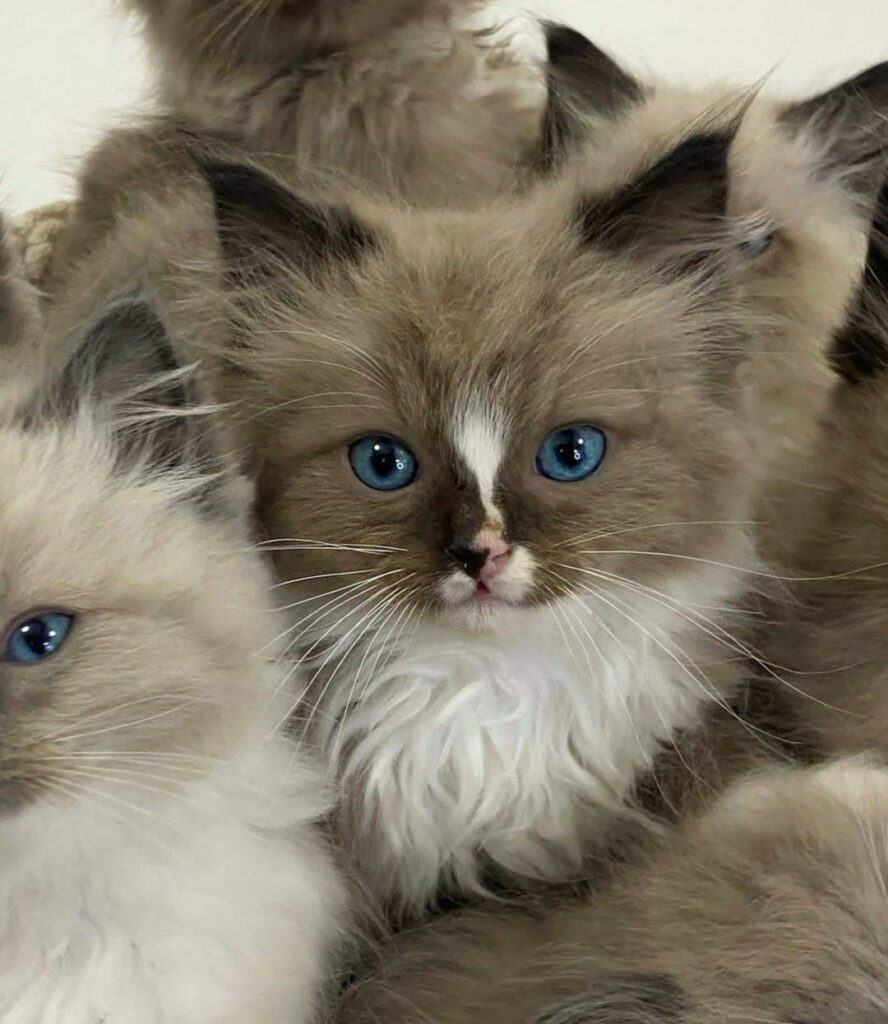
A Breed on the Rise: The Ragdoll’s popularity has soared in recent decades. Their docile nature, stunning appearance, and adaptability to various living environments have made them a favorite among cat lovers worldwide.
Famous Feline Faces: Ragdolls have graced the pages of popular culture. The character of Mittens from the children’s book series “Anne of Green Gables” is often depicted as a Ragdoll. These captivating felines continue to capture hearts and inspire admiration.
Owning a Ragdoll is a truly rewarding experience. Their gentle temperament, luxurious fur, and affectionate nature make them ideal companions for those seeking a cuddly and calm feline friend. By understanding their unique needs, providing proper care, and offering them a loving environment, you can ensure your Ragdoll thrives and brings joy to your life for many years to come. Whether you seek a loyal cuddle buddy for quiet evenings or a gentle companion content with independent exploration, the Ragdoll offers a unique blend of beauty, serenity, and a heart as soft as their luxurious fur.

Hill’s Science Diet Dog Food: Benefits, Reviews, and How to Choose the Right Formula
Facebook Twitter Pinterest LinkedInWhat is Hill’s Science Diet Dog Food? History of Hill’s Pet Nutrition Hill’s Pet Nutrition: A Legacy of Science and Care A

Healthy Dog Food: Top Choices to Keep Your Dog Happy and Fit
Facebook Twitter Pinterest LinkedInWhy Choosing Healthy Dog Food is Important Impact on Long-Term Health A well-balanced diet plays a crucial role in a dog’s overall

Probiotics For Dogs: Benefits, Top Brands, and How to Choose the Right One
Facebook Twitter Pinterest LinkedInWhat Are Probiotics for Dogs? Definition of Probiotics Probiotics are live microorganisms that, when administered in adequate amounts, confer a health benefit
